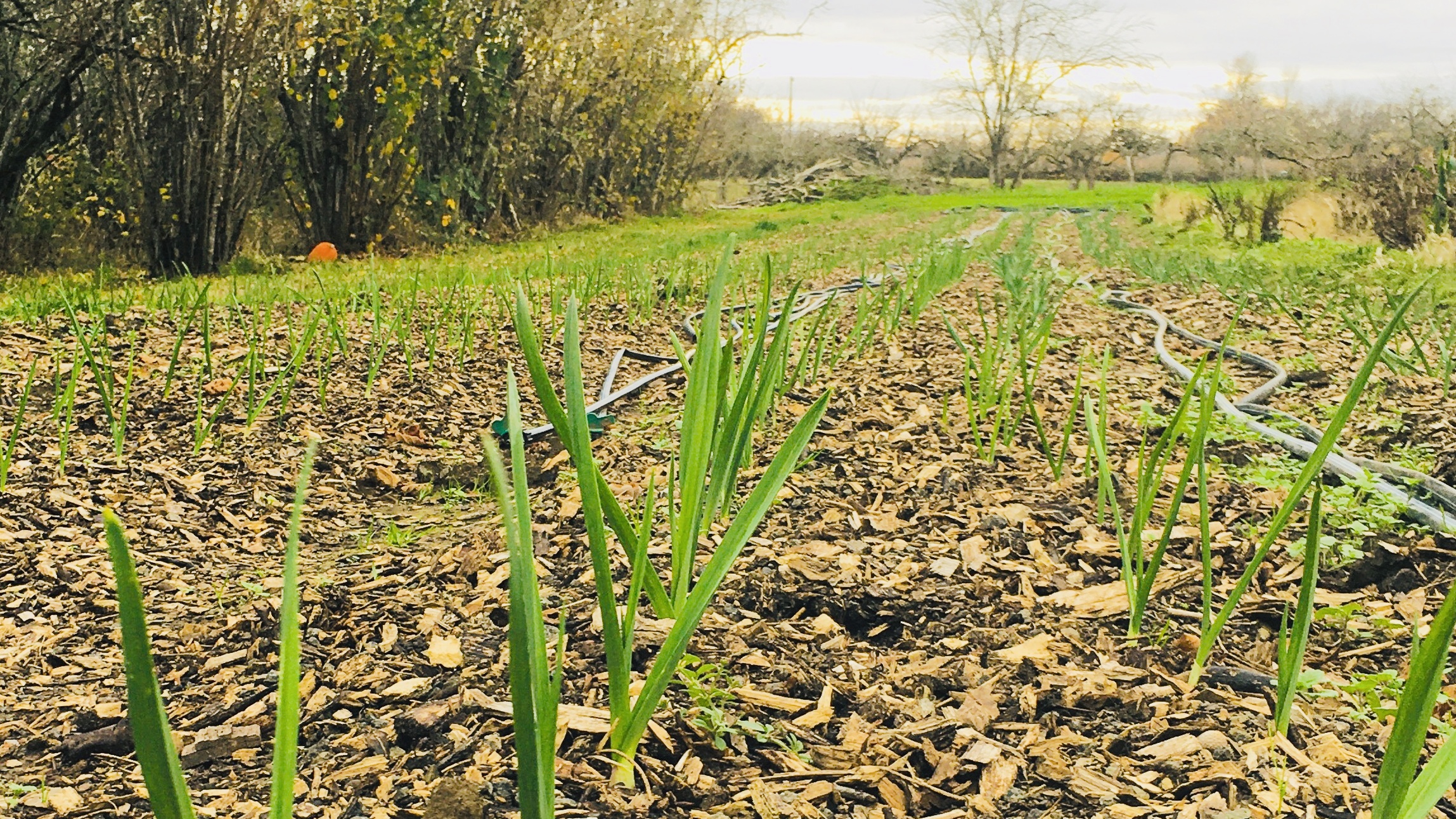What is a Demonstration Garden?
Our Demonstration Gardens are designed to support educational efforts by 1) involving audiences directly in the planning and development of the gardens; 2) involving audiences directly in the gardens’ planting, maintenance, and harvest; and 3) using the gardens during workshops and classes to provide audiences with hands-on experience. We currently provide 12 themed Demonstration Gardens (1.25 acres in total) to facilitate 1) effective garden-based education; 2) opportunities for meaningful volunteer service; and 3) the development of partnerships.
Planting, cultivating and harvesting in a garden enables tangible, real-life involvement that provides sensory and exploratory learning for a multitude of ages and audiences. By combining the traditional classroom experience with garden-based workshops and demonstration we provide engaged learners knowledge gain, increased curiosity, improved skills, problem solving, behavior change, increased confidence, and attitude change.

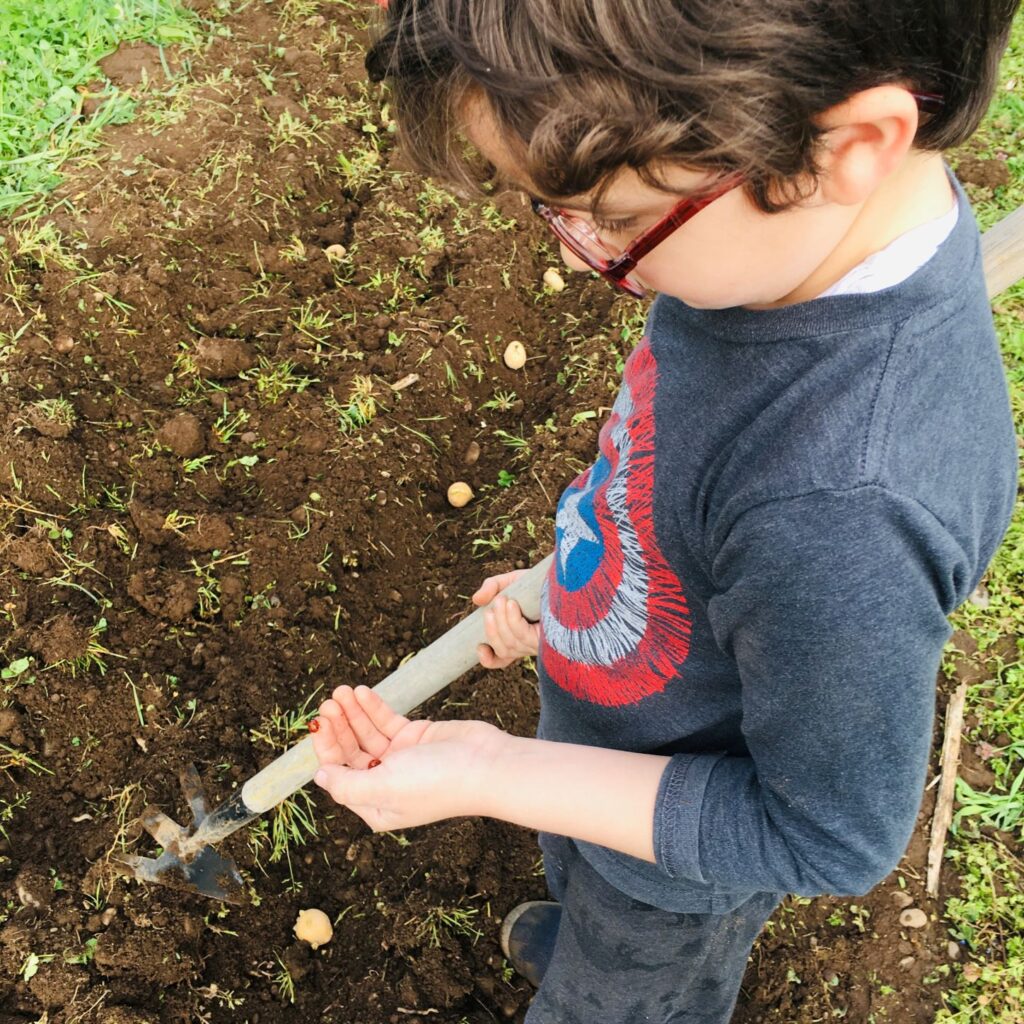
2022 Demonstration Gardens:
Farmer John’s Garden (#1)
This garden exists as a memorial to John Sundquist – the primary steward of the farm for nearly 40 years, and the founder of Parker Learning Gardens. John was a former treeplanter and farmer who built many raised beds for children in the classrooms at Head Start of Lane County, in addition to hosting tours of classroom groups from many schools here at the farm. Unfortunately he passed away before he could completely realize his vision to set up an organization to continue his outreach to inspire, inform, and educate children to better understand plants as the basis of biological life, complexity, and symbiosis. This theme of this garden evolves each year.
Sun Tunnel & Seasonal Food Garden (#2)
The “Sun Tunnel” is a tall tunnel inside of the Seasonal Food Garden, which is meant to demonstrate growing foods for year-round harvest. The ”Sun Tunnel ” is an encapsulated section of the garden which utilizes capturing the suns’ warmth to extend the growing season for food that would otherwise not germinate as early in the year, or would die off from frost damage later in the year. We intend to demonstrate different sections planted at different times of year and meant to harvest at various times throughout the year, showing that you can always harvest something to put on your dinner plate no matter the season.
Children’s Wonder Garden (#3)
Wonder Garden programs are creatively designed to reconnect children with the earth and plants. Activities teach children about the source of the food they eat, organic gardening, and the importance of biodiversity and community. Children learn and practice respect, environmental stewardship, and friendship through a curriculum that includes a focus on working together and inspiring a sense of wonder for the natural world. The curriculum aligns with the Oregon STEM Education Initiative and includes art, food preparation, reading, and nature-based activities.
Subsistence Garden (#4)
This garden provides an example of how you can grow a variety of fresh produce from spring to late fall, providing help in times of scarcity. Subsistence vegetable gardens save money and ensure produce is available and organically grown. Vegetables are divided and planted by their best season of culture. Design involves planting cool season crops for the spring and fall months, while warm-season crops go in for summer growing. Planning the garden with a well-rounded collection of vegetables is essential. Nutritional considerations for proteins (legumes and brassicas), carbohydrates/starches (root vegetables, corn, and squash), greens, fruits, and flavorful herbs will revolve around each season. We also grow willow here to provide fiber and resources for functional crafting: baskets, hats, living fencing, etc. We have around 20 different varieties of willow!
Along the Orchard Garden (#5)
This full-sun garden has an annual rye grass cover crop (“catch crop”) growing in it presently. It was planted with garlic last year. That garlic was mulched with a mix of wood chips and basalt rock fines (“John’s Magic Mulch”). John’s Magic Mulch was worked into the soil mid-summer, after the garlic harvest. For the Spring of 2022, the ryegrass catch crop will get worked into the soil several weeks before planting the garden. This garden is open for a community partnership project.
Science Garden (#6)
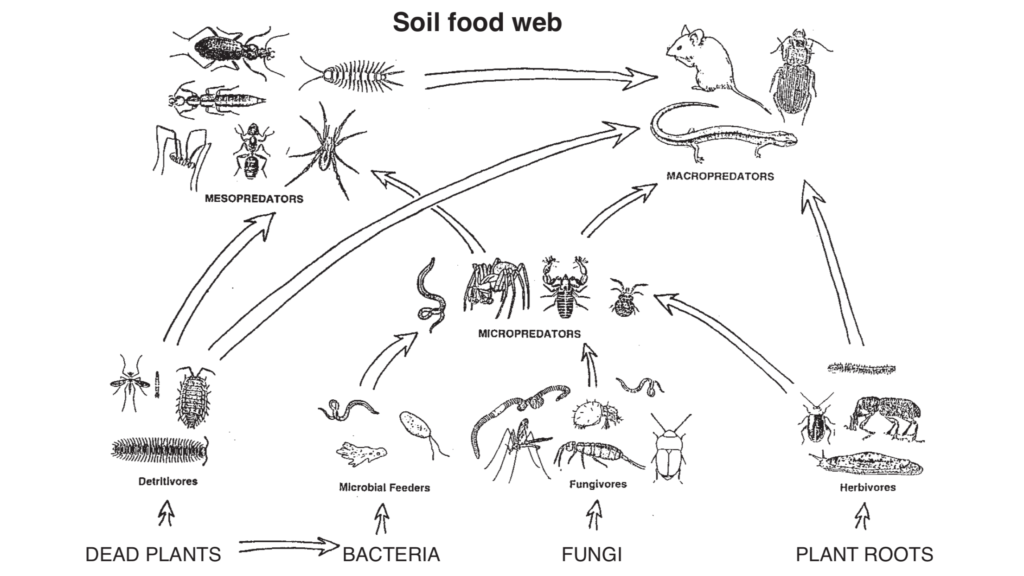
Science is exciting, and linking science lessons to the garden creates impressions that last a lifetime. With an explanatory, hands-on focus we will explore the building blocks of life, microbes, the soil food web, photosynthesis, source of foods’ nutrients, soil regeneration, carbon sequestration, and more. One of the best parts of our Science Garden is our Amazing Bus of Science, located right in the garden. Our Amazing Bus of Science serves as our laboratory in the garden, housing tools and instruments for making observations and taking measurements.
Perpetual Perennial Garden (#7)
Perennials come back and grow larger every year. They only have to be planted once and have different needs for maintenance annually. This garden will demonstrate the different ways to take care of perennial plants throughout the year such as, mulching, weeding, pruning, thinning, fertilizing, etc. We hope to add some exciting edible perennials like rhubarb, blueberries, huckleberries, thornless blackberries, and much more.
Edible Native Garden (#8)
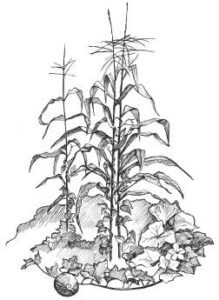
Here we plan to grow squash, beans, corn, amaranth and sunflowers in various arrangements of the “Three Sisters” planting. For many Native American communities corn, beans, and squash represent the most important crops. They complement each other in the garden as well as nutritionally. Corn provides tall stalks for the beans to climb, beans provide nitrogen to fertilize the soil, and the large squash leaves shade out weeds and help retain soil moisture. Sunflowers and amaranth are considered other sisters. They offer shade to the other sisters during the heat of the afternoon, and attract pollinators. Amaranth’s edible seeds and greens contribute to a nutritionally balanced diet, as well as provide additional stalks for beans to climb. At harvest, we aspire to provide some examples of pre-Columbian cuisine for certain visiting groups.
Herbalist Adventure Garden (#9)
This garden has had the main paths laid out and wattle edging installed by Teen Interns from Wolverine Community High School in Spring 2023. It currently has Mint, Lemon Balm, Rosemary, Sage, Thyme, Oregano, and Lavender, with room for many more additions. The annual beds still need prepped for the 2024 planting season! The bees will naturally adventure toward this garden. It will have more of an artistically landscaped design, making you feel like you are taking a walk through your utmost culinary aroma therapy dreams. This garden’s pathways have been spaced to provide one of our first wheelchair/handicap accessible gardens on the farm. Students and Volunteers will be able to harvest fresh herbs to flavor popcorn, to dehydrate, to make medicine, to share with their families and more.
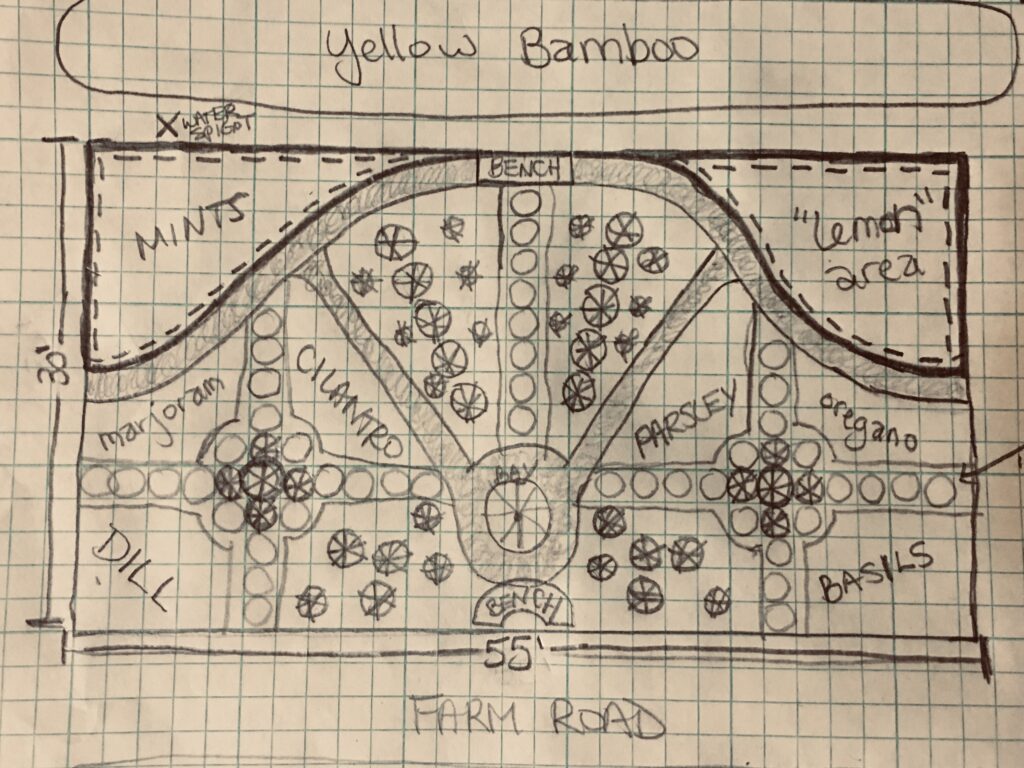
Community Class Garden (#10)
This full-sun garden is on a well draining patch of soil. It is brand new ground that needs some organic matter in the way of mulch and green manure/cover crops. This garden is available for a community Seed to Table style class. The members of the community would tend to the garden while PLG would prepare the land for planting and provide irrigation.
Sensory Pollination Garden (#11)
Designed to stimulate and pollinate! This garden will abound with unique flowers, specialty grasses, fragrant herbs and fresh edibles. Pollinators are more likely to find plants in gardens that provide larger drifts of color. Similar varieties will be planted close together in this sunnier garden to enable butterflies and other pollinators to bask in the sun. It will be located near our on-site beehives. Visitors will be encouraged to feel the textures, smell the aromas, observe the flowers and their pollinators, and taste some fresh vegetables. Great option for yoga classes in the garden!
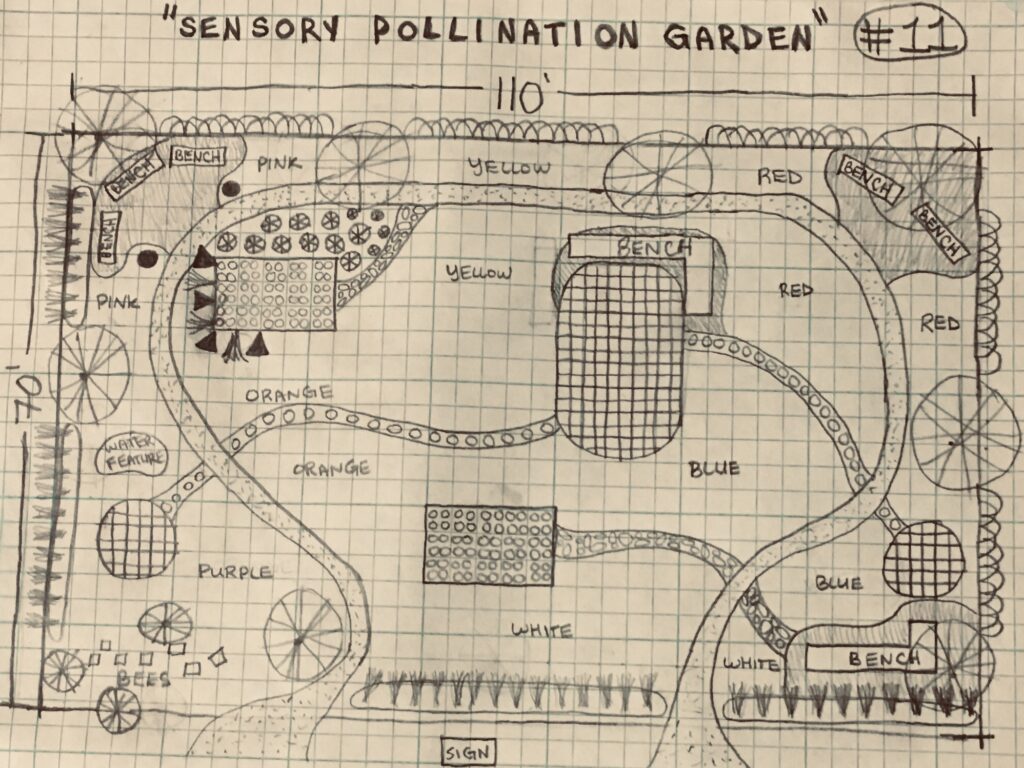
The Great Pumpkin Patch
A plethora of wonderful pumpkins of all shapes and sizes. We intend to plant around a dozen varieties placed somewhat haphazardly throughout the patch. The result will be a jumble of all the different pumpkins grown and interwoven together. This will enable visitors to compare varieties at every point throughout. Large, small, orange, white! – How do I choose?…
The Mysterious Heirloom Corn Maze
We are planning to sow an acre block of heirloom Painted Mountains corn for our corn maze or maize maze design. Within the giant labyrinth of loops and dead ends will be an educational scavenger hunt that will help guide children through the puzzle. This genetically diverse corn grows interspersed stalks and leaves that are deep scarlet red in color, and the corn kernels contain every shade of color known to corn. Enter into the mystery…


